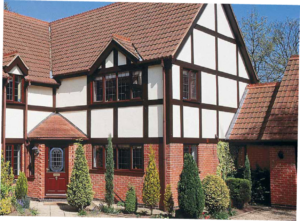A Brief History Of The Evolution Of Double Glazing For Energy Efficiency

Double Glazing for Energy Efficiency
In a period where ecological awareness is on the rise and energy costs are continuously climbing, homeowners are looking for innovative options to improve energy efficiency in their houses. One such solution that has acquired extensive popularity is double glazing. This post looks into the principle of double glazing, its advantages, and how it contributes to energy efficiency, in addition to addressing some frequently asked questions about the innovation.
What is Double Glazing?
Double glazing describes a window building and construction method that includes 2 panes of glass separated by a space filled with gas or air. This design creates an insulating barrier that considerably minimizes the transfer of heat between the interior and exterior environments. Typically, the space in between the glass panes is filled with argon gas, known for its thermal insulation properties.
Key Components of Double Glazing
| Part | Description |
|---|---|
| Outer Pane | The very first layer that deals with the outside environment. |
| Inner Pane | The 2nd layer that faces the interior of the home. |
| Spacer Bar | A material that separates the 2 glass panes. |
| Gas Fill | Typically argon or krypton, provides insulation in between panes. |
| Sealant | Holds the glass in place and avoids moisture ingress. |
Advantages of Double Glazing
Double glazing is increasingly becoming an appealing choice for homeowners and contractors alike, mostly due to its various benefits:
1. Energy Efficiency
Among the most significant advantages of double glazing is its capability to boost energy performance. By minimizing heat loss during winter and keeping interiors cooler in summertime, double glazing minimizes the need for heating and cooling systems, ultimately resulting in lower energy bills.
2. Improved Comfort
Homes fitted with double-glazed windows are usually more comfortable. By keeping a constant indoor temperature level, double glazing gets rid of cold drafts and locations, making living areas more satisfying year-round.
3. Noise Reduction
Double glazing also functions as an efficient . The extra layer of glass and the insulating gas in between help to absorb and lessen outside noise. This is particularly useful for property owners residing in metropolitan locations or near busy roads.
4. Increased Property Value
Increased energy performance and comfort levels can improve the general worth of a residential or commercial property. Repair My Windows And Doors view double-glazed windows as an appealing feature, making homes with this upgrade more desirable.
5. Condensation Prevention
The insulating homes of double glazing also reduce the probability of condensation forming on the interior side of the windows. This is essential for avoiding mold and moisture damage, adding to a healthier indoor environment.
How Double Glazing Works
The effectiveness of double glazing lies in its design:
- Insulating Layer: The area in between the two panes serves as an insulating layer, lowering heat transfer.
- Low-E Coating: Many double-glazed windows are coated with a low-emissivity (low-E) product, which shows heat back into the home during winter and blocks excessive heat from going into throughout summer season.
- Ventilation: Modern double-glazed windows often include ventilation options that allow fresh air into the home without compromising insulation.
Factors To Consider for Double Glazing Installation
When thinking about double glazing installation, property owners need to take into consideration the following elements:
- Type of Gas: Argon and krypton are commonly used as insulating gases. Krypton is more effective but likewise more expensive.
- Window Frame Material: The material of the frame (uPVC, wood, or aluminum) can affect energy performance. For example, uPVC and wood are much better insulators than aluminum.
- Installation Quality: Proper installation is crucial for optimizing energy efficiency. Inadequately set up windows can result in air leakages and reduce the general efficiency of double glazing.
Types of Double Glazing
There are different styles of double-glazed windows offered:
- Standard Double Glazing: The most typical setup, supplying substantial insulation.
- Triple Glazing: An upgrade over double glazing, offering even better thermal insulation but at a greater cost.
- Secondary Glazing: An extra window installed over an existing single-glazed window, mainly utilized in noted structures.
Often Asked Questions (FAQs)
Q1: Is double glazing worth the investment?
Yes, while the initial costs might be higher than single-glazed windows, the long-lasting savings on energy costs and increased convenience make double glazing a worthwhile investment.
Q2: Can I install double glazing myself?
While some homeowners may try DIY installations, it is recommended to employ an expert for the very best outcomes, ensuring a correct fit and optimized energy performance.
Q3: How long does double glazing last?
With correct care and maintenance, double-glazed windows can last for 20-30 years. Nevertheless, the life expectancy depends on the quality of products and installation.
Q4: Are there any maintenance requirements for double-glazed windows?
Double-glazed windows need very little upkeep; regular cleansing and looking for seal stability when a year are suggested.
Double glazing is an effective tool in the pursuit of energy performance for the modern homeowner. By using a variety of take advantage of energy cost savings to improved convenience and noise decrease, it attends to many of the challenges dealt with in traditional window setups. As sustainability becomes a significantly important factor to consider in home design, the application of double glazing can significantly contribute to decreased carbon footprints and increased residential or commercial property worth. Investing in double-glazed windows is an investment in future comfort, energy savings, and ecological obligation.

